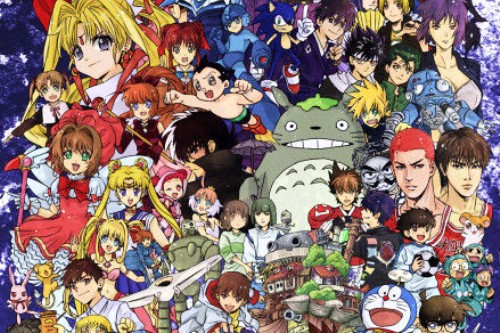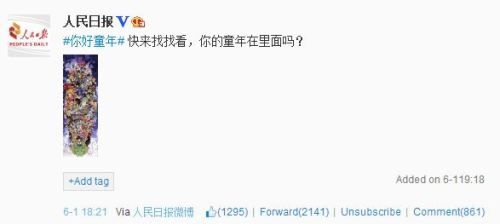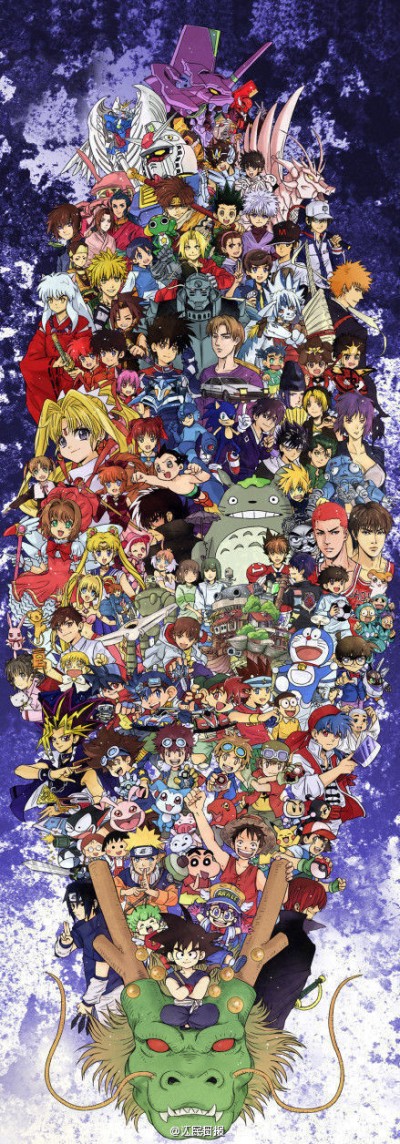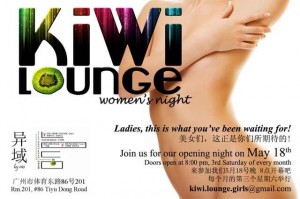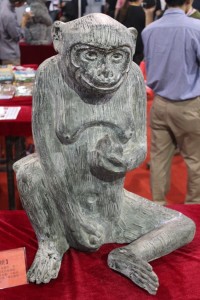On a grisly wet morning, I find myself standing at the foot of a bright red banner displaying the words “Original Element”, followed by its Chinese spelling cramped underneath. This imposing sign opens the path towards one of Guangzhou’s last remaining art scenes, a business that is slowly receding, mostly unnoticed, at the hands of the government.
Modern art, in its diverse shapes and forms, has been slowly growing over the past few years, fed by a new promise of future liberalization and inspiration from its already developed Hong Kong counterpart. New artists rising from a “massive” underground subculture are breaking the conceptual and commercial barriers once closely guarded by the system. However, while the inspiration and content are there, pulsing and ready to burst, the ground seems to be crumbling beneath their feet.
A new breed of visionary artists is being hounded out of their rented spaces by the government. Old factories and industrial zones, rebuilt from scratch and transformed into booming, colourful headquarters of modern art are being yet again demolished and replaced by financial centres.
However, one man is doing his best to prevent this from happening.
Hugo, Chairman of SILO Creative Community, spread out a protective wing for Guangzhou’s art community and invested in Original Element Creative Park, an art centre coming to life at the heart of Liwan District in Guangzhou.
“All these resources have to form an industry of change,” he says, calmly looking outside the window of his office-turned-living room. Much like his business, the room, raised beyond street level on the rooftop of one of the centre’s under-construction buildings, is a splash of colour in the midst of a grey, seemingly decaying area.
A businessman at heart, he describes his native Guangzhou as “a very pragmatic and realistic city.”
“It took China 30 years to catch up with Europe’s developments. We spent the past developing the economy. Now, we can take a break and think about what life is about and how we want to spend it,” he says, with the help of our translator.
And the best way to start enjoying the already comfortable economic position of this continuously developing metropolis is to give art a chance.
Hugo is already giving it more than just that. With a personal investment of RMB150 million, he is revamping South China’s first brewery and turning it into a vibrant, welcoming art scene.
Outside in the pouring rain, the metallic blows of hammers and the sharp roars of machinery are diligently echoing his promise. Original Element, taken over by SILO Creative Community two years ago, already encompasses a range of art galleries, studios, expensive brand shops, and a sleek, cutting-edge restaurant. This makes for 80 per cent of the space, already established and attracting young audiences. The rest is to be developed within six months, about the same amount of time Hugo thinks it will take to start making a profit.
“The money-making part hasn’t started yet,” he says with a smile. When I marvel at this, he explains his faith in his investment. Having rented the place for the next 20 years, OE is only in its infancy.
It occurs to me that while other renowned art spaces, such as Redtory, are being constantly brought down and facing closure, 20 years from now, this small industrial-looking art district will be the last one standing, a single splash of colour on the city’s grey canvass.
Confronted with this image, Hugo laughs in disbelief.
“People think the creative industry is about places, but it is not; it’s about platforms. So it doesn’t really matter that the government is taking all these spaces back, because there are alternative platforms, such as the digital medium, for artists to express themselves, and that’s the key.”
Hugo’s unshaken belief in the art community’s potential is inspiring. After travelling around the world, including four years spent in Canada, he returned to China, confident that culture will enter a golden age within the next 10 years. His confidence is based on continual observation of Hong Kong, which is pushing new boundaries in terms of its art scene.
Soon, Guangdong will import the same openness, he thinks, especially in terms of modern dance, a form of art in which Guangzhou is already leading.
“China is opening up, mainly politically,” he says. “What you can see around you now is chaos everywhere. But art needs chaos for inspiration and that can be translated as a huge potential for the art world.”
OE is unique in many ways, including how it conducts its business. Artists are charged lower rents for their spaces in an encouraging and supportive gesture. Moreover, the performers are given a free hand: management mostly stays away from the creative process, allowing them to curate their own shows in the way they deem appropriate.
Without doubt, the whole business strikes me as a daring project. Is this a form of dissidence in itself? Hugo shakes his head dismissively.
“Artists don’t have time for revolutions,” he said.
“Sometimes, art can be a form of dissidence, but only in the hands of artists like Ai Weiwei. But these artists, like everyone else, want to survive. So they are not going to kill themselves by involving themselves in politically heavy art.”
However, he does mention a recent “angry exhibition” by a Chinese oil painter. The message, he says, can be interpreted only from an emotional point of view.
As the cold rain outside dies down, we start our descent back in the streets with Hugo explaining that art is the venture of emotions.
If this is true, the current developments are predicting a powerful emotional storm that will sweep Guangzhou in the near future.
Address: Original Element Creative Park, No 63, Xizeng Lu, Liwan District, Guangzhou (Exit D, Xicun Station, Line 5)
原创元素创意园, 广州市荔湾区西增路63号





